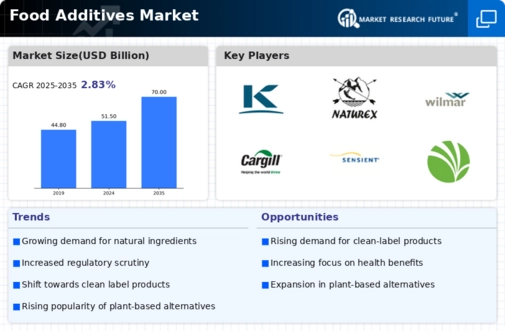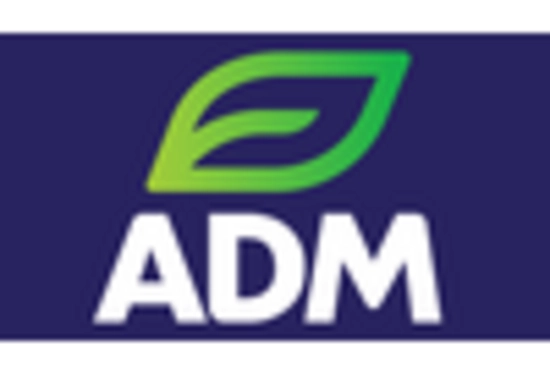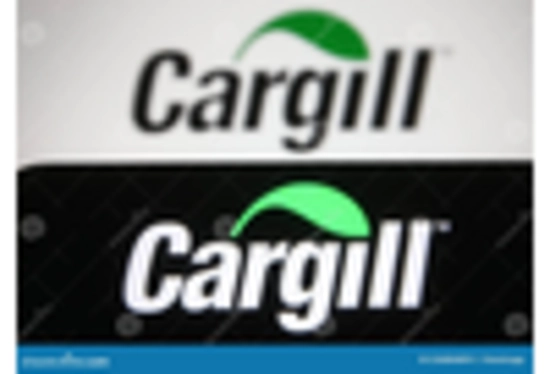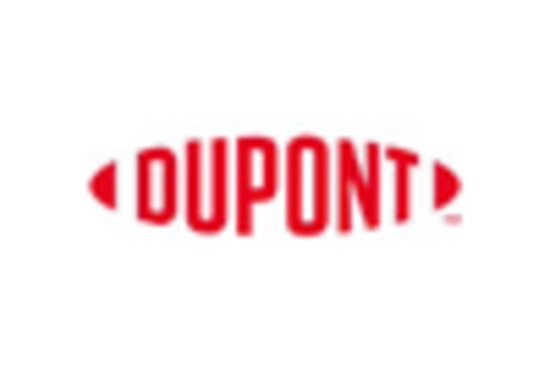- Food Additives Market By Type (USD Billion, 2019-2035)
- Preservatives
- Flavor Enhancers
- Coloring Agents
- Sweeteners
- Emulsifiers
- Food Additives Market By Functionality (USD Billion, 2019-2035)
- Preservation
- Flavoring
- Coloring
- Texture Improvement
- Nutritional Enhancement
- Food Additives Market By Source (USD Billion, 2019-2035)
- Natural
- Synthetic
- Biotechnological
- Food Additives Market By End Use Industry (USD Billion, 2019-2035)
- Food Beverages
- Pharmaceuticals
- Cosmetics
- Animal Feed
- Food Additives Market By Regional (USD Billion, 2019-2035)
- North America
- Europe
- South America
- Asia Pacific
- Middle East and Africa
North America Outlook (USD Billion, 2019-2035)
- North America Food Additives Market by Type
- Preservatives
- Flavor Enhancers
- Coloring Agents
- Sweeteners
- Emulsifiers
- North America Food Additives Market by Functionality Type
- Preservation
- Flavoring
- Coloring
- Texture Improvement
- Nutritional Enhancement
- North America Food Additives Market by Source Type
- Natural
- Synthetic
- Biotechnological
- North America Food Additives Market by End Use Industry Type
- Food Beverages
- Pharmaceuticals
- Cosmetics
- Animal Feed
- North America Food Additives Market by Regional Type
- US Outlook (USD Billion, 2019-2035)
- US Food Additives Market by Type
- Preservatives
- Flavor Enhancers
- Coloring Agents
- Sweeteners
- Emulsifiers
- US Food Additives Market by Functionality Type
- Preservation
- Flavoring
- Coloring
- Texture Improvement
- Nutritional Enhancement
- US Food Additives Market by Source Type
- Natural
- Synthetic
- Biotechnological
- US Food Additives Market by End Use Industry Type
- Food Beverages
- Pharmaceuticals
- Cosmetics
- Animal Feed
- CANADA Outlook (USD Billion, 2019-2035)
- CANADA Food Additives Market by Type
- Preservatives
- Flavor Enhancers
- Coloring Agents
- Sweeteners
- Emulsifiers
- CANADA Food Additives Market by Functionality Type
- Preservation
- Flavoring
- Coloring
- Texture Improvement
- Nutritional Enhancement
- CANADA Food Additives Market by Source Type
- Natural
- Synthetic
- Biotechnological
- CANADA Food Additives Market by End Use Industry Type
- Food Beverages
- Pharmaceuticals
- Cosmetics
- Animal Feed
Europe Outlook (USD Billion, 2019-2035)
- Europe Food Additives Market by Type
- Preservatives
- Flavor Enhancers
- Coloring Agents
- Sweeteners
- Emulsifiers
- Europe Food Additives Market by Functionality Type
- Preservation
- Flavoring
- Coloring
- Texture Improvement
- Nutritional Enhancement
- Europe Food Additives Market by Source Type
- Natural
- Synthetic
- Biotechnological
- Europe Food Additives Market by End Use Industry Type
- Food Beverages
- Pharmaceuticals
- Cosmetics
- Animal Feed
- Europe Food Additives Market by Regional Type
- Germany
- UK
- France
- Russia
- Italy
- Spain
- Rest of Europe
- GERMANY Outlook (USD Billion, 2019-2035)
- GERMANY Food Additives Market by Type
- Preservatives
- Flavor Enhancers
- Coloring Agents
- Sweeteners
- Emulsifiers
- GERMANY Food Additives Market by Functionality Type
- Preservation
- Flavoring
- Coloring
- Texture Improvement
- Nutritional Enhancement
- GERMANY Food Additives Market by Source Type
- Natural
- Synthetic
- Biotechnological
- GERMANY Food Additives Market by End Use Industry Type
- Food Beverages
- Pharmaceuticals
- Cosmetics
- Animal Feed
- UK Outlook (USD Billion, 2019-2035)
- UK Food Additives Market by Type
- Preservatives
- Flavor Enhancers
- Coloring Agents
- Sweeteners
- Emulsifiers
- UK Food Additives Market by Functionality Type
- Preservation
- Flavoring
- Coloring
- Texture Improvement
- Nutritional Enhancement
- UK Food Additives Market by Source Type
- Natural
- Synthetic
- Biotechnological
- UK Food Additives Market by End Use Industry Type
- Food Beverages
- Pharmaceuticals
- Cosmetics
- Animal Feed
- FRANCE Outlook (USD Billion, 2019-2035)
- FRANCE Food Additives Market by Type
- Preservatives
- Flavor Enhancers
- Coloring Agents
- Sweeteners
- Emulsifiers
- FRANCE Food Additives Market by Functionality Type
- Preservation
- Flavoring
- Coloring
- Texture Improvement
- Nutritional Enhancement
- FRANCE Food Additives Market by Source Type
- Natural
- Synthetic
- Biotechnological
- FRANCE Food Additives Market by End Use Industry Type
- Food Beverages
- Pharmaceuticals
- Cosmetics
- Animal Feed
- RUSSIA Outlook (USD Billion, 2019-2035)
- RUSSIA Food Additives Market by Type
- Preservatives
- Flavor Enhancers
- Coloring Agents
- Sweeteners
- Emulsifiers
- RUSSIA Food Additives Market by Functionality Type
- Preservation
- Flavoring
- Coloring
- Texture Improvement
- Nutritional Enhancement
- RUSSIA Food Additives Market by Source Type
- Natural
- Synthetic
- Biotechnological
- RUSSIA Food Additives Market by End Use Industry Type
- Food Beverages
- Pharmaceuticals
- Cosmetics
- Animal Feed
- ITALY Outlook (USD Billion, 2019-2035)
- ITALY Food Additives Market by Type
- Preservatives
- Flavor Enhancers
- Coloring Agents
- Sweeteners
- Emulsifiers
- ITALY Food Additives Market by Functionality Type
- Preservation
- Flavoring
- Coloring
- Texture Improvement
- Nutritional Enhancement
- ITALY Food Additives Market by Source Type
- Natural
- Synthetic
- Biotechnological
- ITALY Food Additives Market by End Use Industry Type
- Food Beverages
- Pharmaceuticals
- Cosmetics
- Animal Feed
- SPAIN Outlook (USD Billion, 2019-2035)
- SPAIN Food Additives Market by Type
- Preservatives
- Flavor Enhancers
- Coloring Agents
- Sweeteners
- Emulsifiers
- SPAIN Food Additives Market by Functionality Type
- Preservation
- Flavoring
- Coloring
- Texture Improvement
- Nutritional Enhancement
- SPAIN Food Additives Market by Source Type
- Natural
- Synthetic
- Biotechnological
- SPAIN Food Additives Market by End Use Industry Type
- Food Beverages
- Pharmaceuticals
- Cosmetics
- Animal Feed
- REST OF EUROPE Outlook (USD Billion, 2019-2035)
- REST OF EUROPE Food Additives Market by Type
- Preservatives
- Flavor Enhancers
- Coloring Agents
- Sweeteners
- Emulsifiers
- REST OF EUROPE Food Additives Market by Functionality Type
- Preservation
- Flavoring
- Coloring
- Texture Improvement
- Nutritional Enhancement
- REST OF EUROPE Food Additives Market by Source Type
- Natural
- Synthetic
- Biotechnological
- REST OF EUROPE Food Additives Market by End Use Industry Type
- Food Beverages
- Pharmaceuticals
- Cosmetics
- Animal Feed
APAC Outlook (USD Billion, 2019-2035)
- APAC Food Additives Market by Type
- Preservatives
- Flavor Enhancers
- Coloring Agents
- Sweeteners
- Emulsifiers
- APAC Food Additives Market by Functionality Type
- Preservation
- Flavoring
- Coloring
- Texture Improvement
- Nutritional Enhancement
- APAC Food Additives Market by Source Type
- Natural
- Synthetic
- Biotechnological
- APAC Food Additives Market by End Use Industry Type
- Food Beverages
- Pharmaceuticals
- Cosmetics
- Animal Feed
- APAC Food Additives Market by Regional Type
- China
- India
- Japan
- South Korea
- Malaysia
- Thailand
- Indonesia
- Rest of APAC
- CHINA Outlook (USD Billion, 2019-2035)
- CHINA Food Additives Market by Type
- Preservatives
- Flavor Enhancers
- Coloring Agents
- Sweeteners
- Emulsifiers
- CHINA Food Additives Market by Functionality Type
- Preservation
- Flavoring
- Coloring
- Texture Improvement
- Nutritional Enhancement
- CHINA Food Additives Market by Source Type
- Natural
- Synthetic
- Biotechnological
- CHINA Food Additives Market by End Use Industry Type
- Food Beverages
- Pharmaceuticals
- Cosmetics
- Animal Feed
- INDIA Outlook (USD Billion, 2019-2035)
- INDIA Food Additives Market by Type
- Preservatives
- Flavor Enhancers
- Coloring Agents
- Sweeteners
- Emulsifiers
- INDIA Food Additives Market by Functionality Type
- Preservation
- Flavoring
- Coloring
- Texture Improvement
- Nutritional Enhancement
- INDIA Food Additives Market by Source Type
- Natural
- Synthetic
- Biotechnological
- INDIA Food Additives Market by End Use Industry Type
- Food Beverages
- Pharmaceuticals
- Cosmetics
- Animal Feed
- JAPAN Outlook (USD Billion, 2019-2035)
- JAPAN Food Additives Market by Type
- Preservatives
- Flavor Enhancers
- Coloring Agents
- Sweeteners
- Emulsifiers
- JAPAN Food Additives Market by Functionality Type
- Preservation
- Flavoring
- Coloring
- Texture Improvement
- Nutritional Enhancement
- JAPAN Food Additives Market by Source Type
- Natural
- Synthetic
- Biotechnological
- JAPAN Food Additives Market by End Use Industry Type
- Food Beverages
- Pharmaceuticals
- Cosmetics
- Animal Feed
- SOUTH KOREA Outlook (USD Billion, 2019-2035)
- SOUTH KOREA Food Additives Market by Type
- Preservatives
- Flavor Enhancers
- Coloring Agents
- Sweeteners
- Emulsifiers
- SOUTH KOREA Food Additives Market by Functionality Type
- Preservation
- Flavoring
- Coloring
- Texture Improvement
- Nutritional Enhancement
- SOUTH KOREA Food Additives Market by Source Type
- Natural
- Synthetic
- Biotechnological
- SOUTH KOREA Food Additives Market by End Use Industry Type
- Food Beverages
- Pharmaceuticals
- Cosmetics
- Animal Feed
- MALAYSIA Outlook (USD Billion, 2019-2035)
- MALAYSIA Food Additives Market by Type
- Preservatives
- Flavor Enhancers
- Coloring Agents
- Sweeteners
- Emulsifiers
- MALAYSIA Food Additives Market by Functionality Type
- Preservation
- Flavoring
- Coloring
- Texture Improvement
- Nutritional Enhancement
- MALAYSIA Food Additives Market by Source Type
- Natural
- Synthetic
- Biotechnological
- MALAYSIA Food Additives Market by End Use Industry Type
- Food Beverages
- Pharmaceuticals
- Cosmetics
- Animal Feed
- THAILAND Outlook (USD Billion, 2019-2035)
- THAILAND Food Additives Market by Type
- Preservatives
- Flavor Enhancers
- Coloring Agents
- Sweeteners
- Emulsifiers
- THAILAND Food Additives Market by Functionality Type
- Preservation
- Flavoring
- Coloring
- Texture Improvement
- Nutritional Enhancement
- THAILAND Food Additives Market by Source Type
- Natural
- Synthetic
- Biotechnological
- THAILAND Food Additives Market by End Use Industry Type
- Food Beverages
- Pharmaceuticals
- Cosmetics
- Animal Feed
- INDONESIA Outlook (USD Billion, 2019-2035)
- INDONESIA Food Additives Market by Type
- Preservatives
- Flavor Enhancers
- Coloring Agents
- Sweeteners
- Emulsifiers
- INDONESIA Food Additives Market by Functionality Type
- Preservation
- Flavoring
- Coloring
- Texture Improvement
- Nutritional Enhancement
- INDONESIA Food Additives Market by Source Type
- Natural
- Synthetic
- Biotechnological
- INDONESIA Food Additives Market by End Use Industry Type
- Food Beverages
- Pharmaceuticals
- Cosmetics
- Animal Feed
- REST OF APAC Outlook (USD Billion, 2019-2035)
- REST OF APAC Food Additives Market by Type
- Preservatives
- Flavor Enhancers
- Coloring Agents
- Sweeteners
- Emulsifiers
- REST OF APAC Food Additives Market by Functionality Type
- Preservation
- Flavoring
- Coloring
- Texture Improvement
- Nutritional Enhancement
- REST OF APAC Food Additives Market by Source Type
- Natural
- Synthetic
- Biotechnological
- REST OF APAC Food Additives Market by End Use Industry Type
- Food Beverages
- Pharmaceuticals
- Cosmetics
- Animal Feed
South America Outlook (USD Billion, 2019-2035)
- South America Food Additives Market by Type
- Preservatives
- Flavor Enhancers
- Coloring Agents
- Sweeteners
- Emulsifiers
- South America Food Additives Market by Functionality Type
- Preservation
- Flavoring
- Coloring
- Texture Improvement
- Nutritional Enhancement
- South America Food Additives Market by Source Type
- Natural
- Synthetic
- Biotechnological
- South America Food Additives Market by End Use Industry Type
- Food Beverages
- Pharmaceuticals
- Cosmetics
- Animal Feed
- South America Food Additives Market by Regional Type
- Brazil
- Mexico
- Argentina
- Rest of South America
- BRAZIL Outlook (USD Billion, 2019-2035)
- BRAZIL Food Additives Market by Type
- Preservatives
- Flavor Enhancers
- Coloring Agents
- Sweeteners
- Emulsifiers
- BRAZIL Food Additives Market by Functionality Type
- Preservation
- Flavoring
- Coloring
- Texture Improvement
- Nutritional Enhancement
- BRAZIL Food Additives Market by Source Type
- Natural
- Synthetic
- Biotechnological
- BRAZIL Food Additives Market by End Use Industry Type
- Food Beverages
- Pharmaceuticals
- Cosmetics
- Animal Feed
- MEXICO Outlook (USD Billion, 2019-2035)
- MEXICO Food Additives Market by Type
- Preservatives
- Flavor Enhancers
- Coloring Agents
- Sweeteners
- Emulsifiers
- MEXICO Food Additives Market by Functionality Type
- Preservation
- Flavoring
- Coloring
- Texture Improvement
- Nutritional Enhancement
- MEXICO Food Additives Market by Source Type
- Natural
- Synthetic
- Biotechnological
- MEXICO Food Additives Market by End Use Industry Type
- Food Beverages
- Pharmaceuticals
- Cosmetics
- Animal Feed
- ARGENTINA Outlook (USD Billion, 2019-2035)
- ARGENTINA Food Additives Market by Type
- Preservatives
- Flavor Enhancers
- Coloring Agents
- Sweeteners
- Emulsifiers
- ARGENTINA Food Additives Market by Functionality Type
- Preservation
- Flavoring
- Coloring
- Texture Improvement
- Nutritional Enhancement
- ARGENTINA Food Additives Market by Source Type
- Natural
- Synthetic
- Biotechnological
- ARGENTINA Food Additives Market by End Use Industry Type
- Food Beverages
- Pharmaceuticals
- Cosmetics
- Animal Feed
- REST OF SOUTH AMERICA Outlook (USD Billion, 2019-2035)
- REST OF SOUTH AMERICA Food Additives Market by Type
- Preservatives
- Flavor Enhancers
- Coloring Agents
- Sweeteners
- Emulsifiers
- REST OF SOUTH AMERICA Food Additives Market by Functionality Type
- Preservation
- Flavoring
- Coloring
- Texture Improvement
- Nutritional Enhancement
- REST OF SOUTH AMERICA Food Additives Market by Source Type
- Natural
- Synthetic
- Biotechnological
- REST OF SOUTH AMERICA Food Additives Market by End Use Industry Type
- Food Beverages
- Pharmaceuticals
- Cosmetics
- Animal Feed
MEA Outlook (USD Billion, 2019-2035)
MEA Food Additives Market by Type
- Preservatives
- Flavor Enhancers
- Coloring Agents
- Sweeteners
- Emulsifiers
MEA Food Additives Market by Functionality Type
- Preservation
- Flavoring
- Coloring
- Texture Improvement
- Nutritional Enhancement
MEA Food Additives Market by Source Type
- Natural
- Synthetic
- Biotechnological
MEA Food Additives Market by End Use Industry Type
- Food Beverages
- Pharmaceuticals
- Cosmetics
- Animal Feed
MEA Food Additives Market by Regional Type
- GCC Countries
- South Africa
- Rest of MEA
GCC COUNTRIES Outlook (USD Billion, 2019-2035)
GCC COUNTRIES Food Additives Market by Type
- Preservatives
- Flavor Enhancers
- Coloring Agents
- Sweeteners
- Emulsifiers
GCC COUNTRIES Food Additives Market by Functionality Type
- Preservation
- Flavoring
- Coloring
- Texture Improvement
- Nutritional Enhancement
GCC COUNTRIES Food Additives Market by Source Type
- Natural
- Synthetic
- Biotechnological
GCC COUNTRIES Food Additives Market by End Use Industry Type
- Food Beverages
- Pharmaceuticals
- Cosmetics
- Animal Feed
SOUTH AFRICA Outlook (USD Billion, 2019-2035)
SOUTH AFRICA Food Additives Market by Type
- Preservatives
- Flavor Enhancers
- Coloring Agents
- Sweeteners
- Emulsifiers
SOUTH AFRICA Food Additives Market by Functionality Type
- Preservation
- Flavoring
- Coloring
- Texture Improvement
- Nutritional Enhancement
SOUTH AFRICA Food Additives Market by Source Type
- Natural
- Synthetic
- Biotechnological
SOUTH AFRICA Food Additives Market by End Use Industry Type
- Food Beverages
- Pharmaceuticals
- Cosmetics
- Animal Feed
REST OF MEA Outlook (USD Billion, 2019-2035)
REST OF MEA Food Additives Market by Type
- Preservatives
- Flavor Enhancers
- Coloring Agents
- Sweeteners
- Emulsifiers
REST OF MEA Food Additives Market by Functionality Type
- Preservation
- Flavoring
- Coloring
- Texture Improvement
- Nutritional Enhancement
REST OF MEA Food Additives Market by Source Type
- Natural
- Synthetic
- Biotechnological
REST OF MEA Food Additives Market by End Use Industry Type
Food Beverages
Pharmaceuticals
Cosmetics
Animal Feed

















Leave a Comment